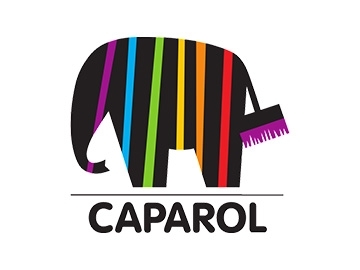Daw Bența: What is not in Charisma does not exist!

“We managed to create a transparent workflow that automates the entire procurement and delivery activity between the headquarters, warehouses, production units and external providers so that we track the sales and inventory situation in real time”
Company
Daw Benta Romania was established in 2001 as a result of the association between DAW Germany and Benta Group. The company quickly specialized in import activities, manufacturing, distribution and export of professional construction finishing materials, all marketed under the brands CAPAROL, CAPATECT, ALPINA, DISBON, NERCHAU. Within just a few years from its debut, Daw Benta ranks among the main players on the Romanian paints and decorative paints market. In 2011, according to Ziarul Financiar, Daw Benta ranked the seventh, with a 17 million Euros turnover and 252 employees.
Daw Benta holds 2 factories producing plaster, paints and polystyrene and 4 distribution warehouses in Bucharest, Sancraiu de Mureș, Cluj Napoca and Timișoara. Furthermore, the company introduced the concept of CAPAROL Showroom on the Romanian market holding 30 stores in the country’s main cities. Through these stores, the final clients have access to the construction finishing materials offer and innovative ideas for decorating indoor and outdoor spaces using these materials.
Challenge
Until 2006, Daw Benta was using for its activity management a software solution that could not be integrated with the application running on the paint colouring machines. Without a module to process the recipes and to import them to the database, any update of the recipe was extremely difficult and involved the software provider’s assistance. There were 3 types of packaging for each product, depending on the colour chart, and 100 recipes could be generated for each type. Thus, one single product could have 300 recipes. Given that the recipes could not be stored in the system, they were disrupting the price lists. “Our price list included 80.000 articles, and 70-80% of them were useless, we never used them”, appreciates Ioan Laszlo-Dan, Information Technology Project Manager.
Once the company started to grow and the colouring department was established, the number of the recipes existing in the Caparol colour chart, and others also, increased significantly. Therefore, continuing to run the activity without integrating the financial system with the production could block the company’s activity.
Due to the fact that the software solution used at that moment was incomplete and could not efficiently track the inventory or correlate the price with each product/recipe, the company decided to replace the entire system
Solution
Charisma ERP was chosen to the detriment of an international software solution for customisation reasons (developing a production module specific to its activities), but also for implementation costs reasons. “The availability to customize the entire implementation process according to our characteristics was a deciding factor in choosing TotalSoft’s software solution” states Ioan Laszlo-Dan, Information Technology Project Manager.
The solution implemented at Daw Benta has several components. Each of them manages a certain part of the business and finally, the information is included into a single database. Thus, Charima ERP, covers through its modules, the financial-accounting, inventory, purchasing, sales and fixed assets activities. The production activity is managed through a dedicated module that communicates with the application running on the painting machines, automating thus the network management and correlating it with the price list.
Moreover, the distribution activity can be closely tracked with a warehouse management module that is integrated in Charisma and enables the unitary management of products, including reception, inventory and delivery of products, regardless of warehouse location.
In order to offer aggregated and rapid information to the commercial department, Daw Benta uses the business intelligence solution, Charisma Analyzer that sustains the analysis process of financial and sales performance indicators.
Results
- The major benefit after implementing Charisma was the automation of data transmission between the painting machines and the financial-accounting system and the possibility of discharging in the colouring area. “Now, the discharge activity is correlated with the physical discharge based on the recipes in the colouring machines. We no longer use both physical and written stock management, but a single solution showing us the exact production status with the associated costs.” declares Ioan Lazslo Dan
- The Generation of an article composed in Charisma was automated, therefore human intervention, verifications in several systems or data entries are no longer needed. Practically, the coloured product with its price calculation and the corresponding discount attached, is generated in Charisma simultaneously with the offer or the order.
- The entire logistics and commercial activity in the company was standardized and organized based on complete procedures. “We managed to create a transparent workflow that automates the entire procurement and delivery activity between the headquarters, warehouses, production units and external providers so that we track the sales and inventory situation in real time.”
- The unique database and the complex reporting system allow tracking the accuracy of the records, simplifying the activity of the controlling department
- The implementation of the warehouse management solution removed delivery errors and wrong prices and significantly reduced the length of sales and delivery time. All stages are found in the system, from the moment of receiving the request for offer to the product invoicing and delivery.
- The colouring process is an important production process included in Charisma: “When the recipes in the colouring machine are updated, this update is automatically accomplished in Charisma and thus, any discrepancy between production and discharge is removed” assesses Ioan Lazslo Dan.
Case study written in 2013
